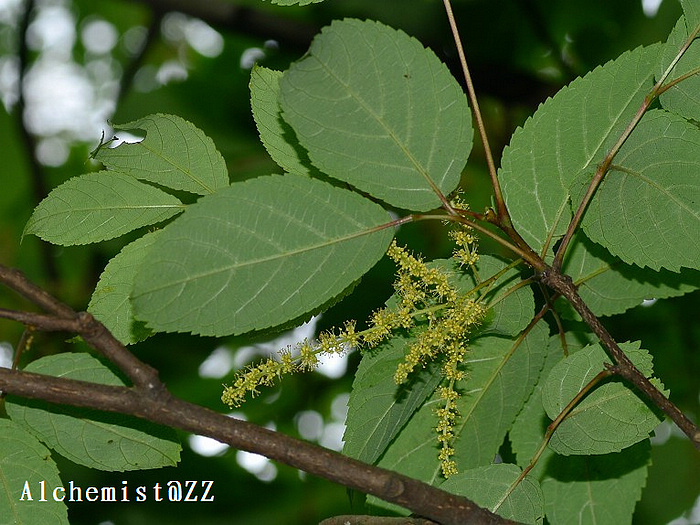- Scientific Name: Tapiscia sinensis Oliv.
- Ref: Hooker’s Icon. Pl. 20: t. 1928. 1890
- Synonym: Tapiscia sinensis var. concolor Cheng, T. sinensis var. macrocarpa T. Z. Hsu.
- Chinese Common Name: 瘿椒树 yǐngjiāoshù, 瘿漆树 yǐngqīshù
- Family: Tapisciaceae
- Genus: Tapiscia
- Distribution: Forests on mountain slopes, valleys, streamsides; 500-2200 m. Anhui, Fujian, Guangdong, Guangxi, Guizhou, Hubei, Hunan, Jiangxi, Sichuan, Yunnan, Zhejiang.
- Photo: 06/10/2013, Hangzhou Botanical Garden, Zhejiang
Trees, 8-15 m tall, deciduous; bark gray to grayish black, twigs glabrous, buds ovate. Leaves odd-pinnate, up to 30 cm; leaflets 5-9; petiolule of lateral leaflets short, that of terminal leaflet up to 12 cm; blades narrowly ovate to ovate, 6-14 × 3.5-6 cm, abaxially grayish white, glabrous or with tufts of hairs on axils of veins, adaxially green, glabrous, base cordate or subcordate, margin serrate, apex acuminate. Male inflorescence 15-25 cm, bisexual inflorescence 5-10 cm. Flowers small, ca. 2 mm in diam., yellowish, fragrant. Calyx margin ciliate; connate sepals campanulate, ca. 1 mm, 5-lobed. Petals narrowly obovate, slightly longer than calyx, margin ciliate. Stamens 5; filaments greenish, 1-2 mm; anthers yellow. Ovary 1-locular with 1 ovule; style longer than stamen in bisexual flower; vestigial ovary present in male flower. Fruit subglobose to oval, 7-18 mm, borne on a short and thick peduncle. Fl. Mar-May, fr. May-Jun. (Flora of China)
